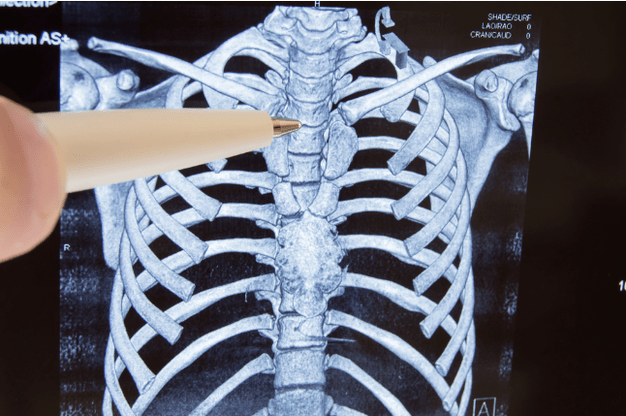Osteochondrosis is a disease who lost normal activities of intervertebral disks (and the body of Vertabra's body, joints and ligaments).

The cause of osteocondrosis is currently the factors that affect the spine during a person's life.Additional osteocondrosis is also developing the injuries of the spinal column, as well as violations of the posture.Some patients note the link to the beginning of the disease and hypothermia.
It is customary to take into account in practice
- cervical osteocondrosis,
- Osteocondrosis of the thorac
- Lomber waist.
It should be noted that osteocondrosis is characterized by damage to several spinal parts at a time.
These are the most common, cervical and thoracic forms, because this is the spinal departments that are subject to the biggest loads.
Symptoms of osteocondrosis
Patients with osteocondrosis describe symptoms:
- paroxismal or firing pain in the spine affected by osteocondrosis;
- Pain increased from physical force, as well as in the morning;
- Pain will be given to the neck, arm or leg, as well as the chest;
- Crisis sensation while twisting.
Osteochondrosis is also characterized by symptoms of a neurological character on the affected side:
- partial motion violations (parez);
- Goosebumps, unpleasant feelings in the form of tingling (paresthesia);
- In the palpease, the tension of muscles in accordance with the affected department is determined.
The disease is not sharp, gradually begins and develops.
The osteocondrosis of the spine should be distinguished from the coronary heart disease (coronary heart disease pain is not related to physical activity, not related to side factors: cough, stretching seat).
Treatment
The same symptoms may have signs of various diseases and the disease cannot occur according to textbooks.Don't try to treat yourself - contact your doctor.
Osteochondrosis therapy always requires an integrated approach.It is necessary to look for doctors such as treatment, therapists, rheumatologists, neuropathologists and physiotherapists.The treatment of osteochondrosis of the spine depends on localization, dominating symptoms and the severity of the disease.
Conservative therapy is aimed to eliminate pain symptoms, as well as to restore the normal function of the spine.
Rational nutrition for osteocondrosis makes the patient's condition very simplifies and promotes more effective therapy.Read more about the principles of nutrition for osteocondrosis in our separate article.
About 10% of patients are sent to surgical treatment.For surgery for surgery, osteocondrosis is the appearance of neurological disorders due to its pinching of the spinal cord.
Additional indicators for surgical treatment of osteocondrosis are considered:
- Long periodical attacks of pain;
- doubt of increased mobility and spinal instability;
- Inefficiency of drug treatment within 3 months;
- Disorders that hinder the patient from a complete life.
Methods of surgical treatment
Surgical interventions with minimum trauma:
- Preparation - Injective-enzyme preparations are taken to the intervert to intervert after throwing the core sights and a lift ring of the disk.
- Ponxial Nucleotomy - interrogation of the intervertebral disk to eliminate part of the poison.
- Denervation of the Denervation - A drug is included in the intervertebral disk that prevents the sensitivity of nervous ends.
The remaining methods of surgical treatment of osteocondrosis of the spine are less softer.These include:
- This operation aims to reduce the symptoms of compromising - the intervertebral disk or partial removal of his tear.
- Prosthesis of intervertebral disks - The main task is to correct the affected vertebral segments.
Operating methods for the treatment of osteocondrosis of the spine, only 50% of the cases will be predicted for full recovery.
The forecast for life with timely treatment is almost always convenient, but the forecast for the work power may be different due to factors.
Exercises for osteocondrosis
Exercise 1.
Tilt your head forward while pressing the forehead with touching fingers.Click your fingers back and whiskey - left, right.The pressure of the heads and pressure of hands is met with the pressure of the head.Spend 10 seconds.For each action.
Exercise 2.
Put the ends of the four fingers against each other, the palm stretches 100-40 seconds with all the surface and soft traction exercises.We can do the same in the temple in a longitudinal and transverse direction.The same - over the ear - to lie in all directions, especially in the lobes.That.In areas rich in biologically active points, you improve the circulation of blood.
Exercise 3.
This type of massage improves blood flow in jugular veins and improves the feeding of the brain.Okay sit, the back is straight.Slowly pull your head back, help with your hand, pressing the chin and pressing up.You can slowly turn your head to a little left and right.Stay in this situation in about a minute.For children, 10 seconds are enough.
Work 4.
This exercise improves the activities of the cervical nerve plexus.Okay sit, the back is straight.Slowly tilt your head slowly by trying to touch your chest jaw.Put the touching fingers behind the head, forward and up, grow the back of the head.Sit in about a minute so.You can repeat in 15 minutes.
Exercise 5.
Raise your shoulders, your ears, down, free, faster - try to get it in 15 seconds.Now as an alternative - one shoulder, the other is 15 seconds.Draw a cervical waist with palm.
























